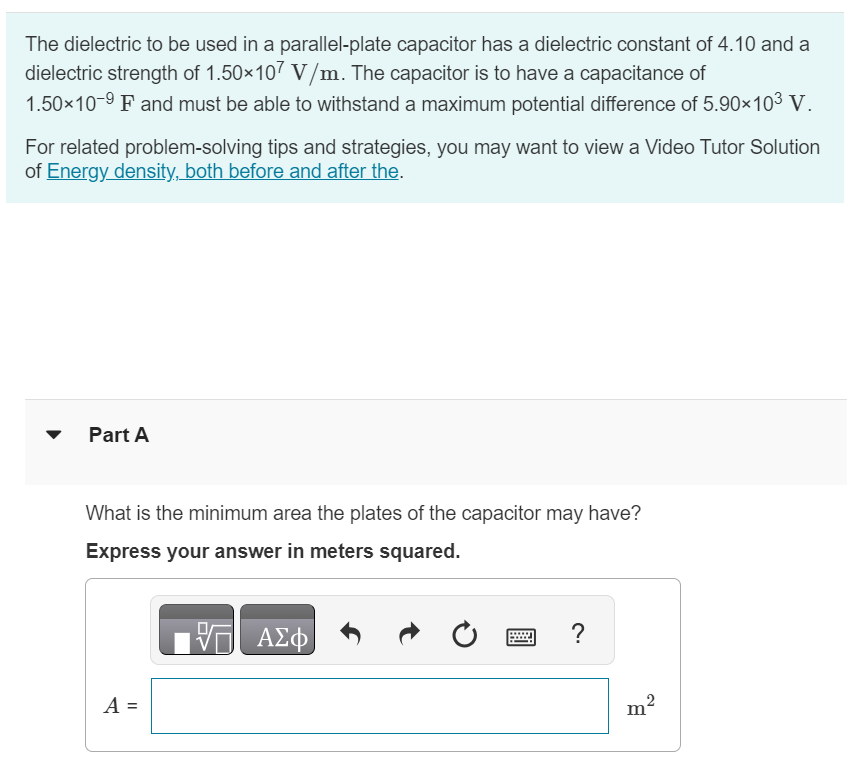The dielectric to be used in a parallel-plate capacitor has a dielectric constant of 4.10 and a dielectric strength of 1.50×107 V/m. The capacitor is to have a capacitance of 1.50×10−9 F and must be able to withstand a maximum potential difference of 5.90×103 V. For related problem-solving tips and strategies, you may want to view a Video Tutor Solution of Energy density, both before and after the. Part A What is the minimum area the plates of the capacitor may have? Express your answer in meters squared.
